At Plan it Wild, the selection of native plants for our projects is a balancing act. Plants must provide functional benefits for our local ecosystems and habitats like sustaining pollinators and other wildlife as well as being aesthetically pleasing in your yard.
I am going to share with you the top five plants we like to work with at Plan it Wild but know that there are so many other plants we work with and that this list keeps evolving. The plants below check all the boxes including being native to this ecoregion, providing visual beauty, providing some form of habitat value, being low maintenance, and being low deer browse.
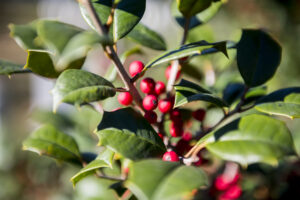
Many of our clients want more privacy from their neighbors, want to block unsightly views, or would like a buffer from the street. The American holly is perfect as it provides evergreen screening while feeding the birds with berries in the winter, feeding pollinators with flowers in the spring, serving as a host plant for the Henry’s elfin butterfly, and the deer tend to keep their distance from its pointy, noxious leaves.
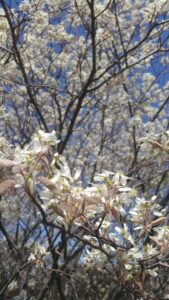
We hear this a lot: “I just want more birds in my yard,” and our response is, “Let’s plant some serviceberry!” Birds not only love eating the berries on this small flowering tree, they love eating the hundreds of different caterpillars that it supports. This is such a workhorse, easy to care for plant that will give you so much including early spring white flowers, orange-red fall foliage, and edible berries not just for the birds, but for you to use in jams and pies.
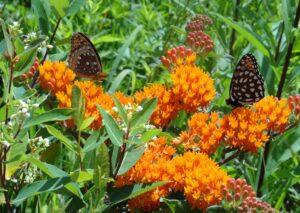
Hello Pollinator Pathway garden! Butterflyweed is a must in any sunny pollinator garden. It has bright orange flowers blooming June through August, is a larval host for at least 12 different moths and butterflies and its pollen, nectar, and leaves are food for so many pollinators and insects.
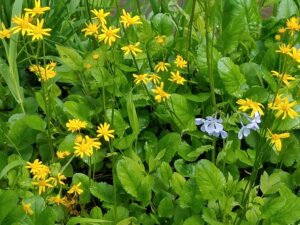
Westchester’s yards have become invaded with many uninvited plants including carpets of weeds that creep along the ground, stifling anything else from growing (for example, the invasive garlic mustard). Enter golden groundsel, a native, aggressive, groundcover that will help hold the line from weed and invasion and help the other natives in your planting bed gain a solid footing. Groundsel serves as a green, living mulch with yellow flowers and leaves that feed pollinators and insects and brighten the landscape in early spring.
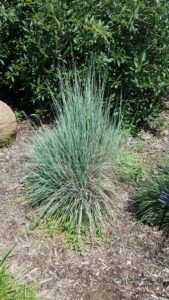
This native grass is my absolute favorite. It always does what it’s supposed to and always looks good. It has beautiful, 3-foot-tall blue-green stems all summer long turning crimson red in the fall, and feeds dozens of different pollinators, insects, and songbirds. All through the winter, queen bumble bees will sometimes nest in the grass, protected within the base of its stems before they emerge in the spring.
Amanda Bayley is the CEO & Co-Founder of Plan it Wild, a sustainable land management company that is bringing back native habitats to Westchester yards and commercial spaces. More Nature. Now. www.PLANitWILD.com



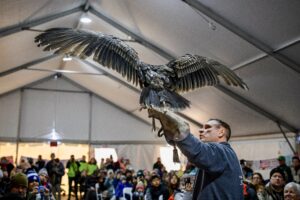


Those are good looking plants! They look very healthy